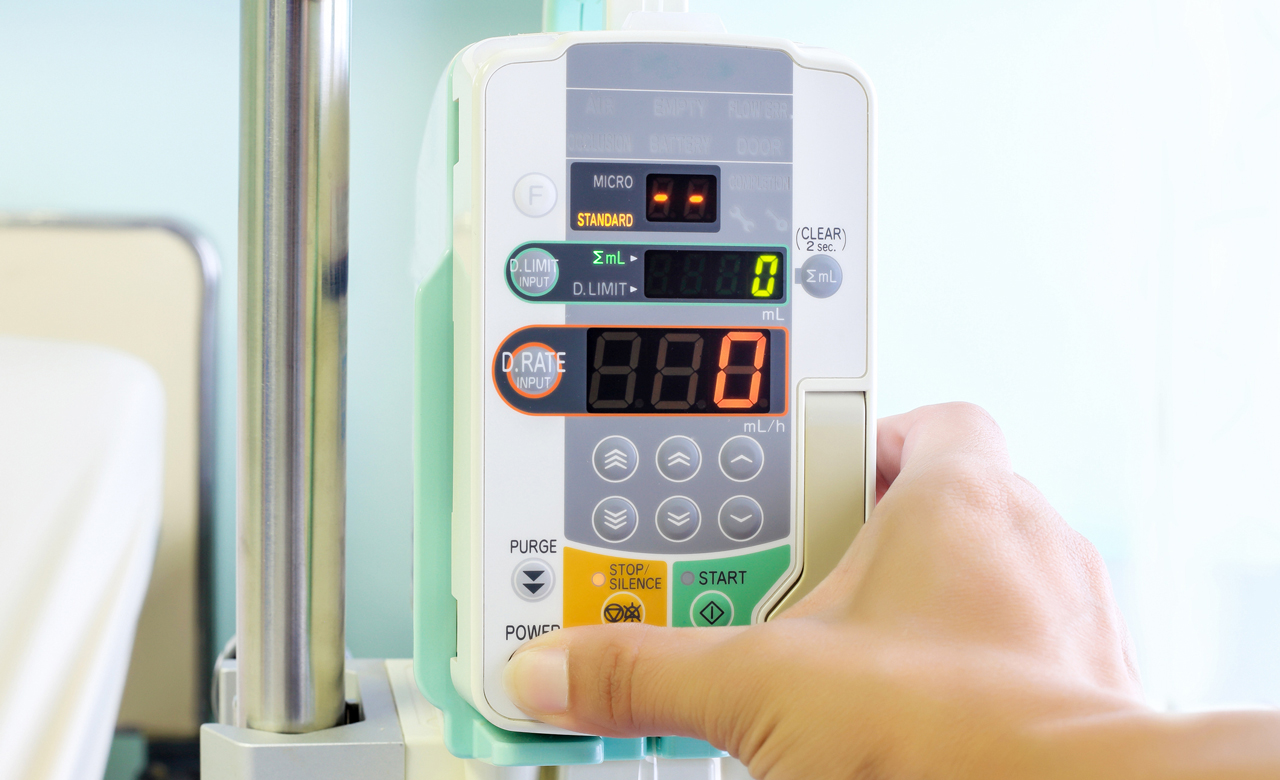Joey Sweeney, PharmD, BCPS

Smart pump errors, which involve both human and technical factors, can cause injury or death to patients. Fatigue and distractions plague many busy patient care units and frequently contribute to smart pump errors. Technical factors that lead to errors include overriding the drug library or using it incorrectly.
In a new publication, Sentinel Event Alert 63: Optimizing Smart Infusion Pump Safety with DERS, The Joint Com-
mission recommends eight actions hospitals can take to optimize safe smart pump use. Many of these suggestions involve the hospital’s pharmacy team.
Drug experts needed
The Joint Commission first suggests that hospital leadership create multidisciplinary project teams for all things smart pump–related.
“Unlike many other medical devices in use in health care, smart infusion pumps require an extensive multidisciplinary team to ensure they are used to their fullest potential,” said Heather Haug, PharmD, an analyst for Advocate Aurora Health in Milwaukee, who was not involved with The Joint Commission publication. “Not only does the nursing staff rely upon smart pumps for administering medications, but our anesthesiologists, respiratory therapists, and other interventional providers are encouraged and/or expected to utilize the same smart infusion pumps.”
Dose error reduction software (DERS) is an integral part of the “smart” portion of the smart pump. This software usually contains a library of drug infusions a nurse can choose from when programming the pump. As long as the correct drug is chosen from the properly managed library, the patient is protected from an under- or overdose.
The Joint Commission next suggests defining how the drug library will be created, tested, engaged with, and maintained. This is where the pharmacist’s involvement is critical. As the drug experts on the health care team, pharmacists are responsible for ensuring that the clinical data of the library (e.g., the maximum rate acceptable for heparin drip) are cohesive, as well as the operational data for the hospital. This operational data includes which drips are offered by the inpatient pharmacy for patient care.
“What may be a logical ‘fix’ to a pharmacist [can be] an impractical workflow to the nurse,” said Haug. “Sometimes the smallest detail, like the way a pharmacy compounded I.V. bags, has the greatest impact in the ability of nurses [to utilize a smart pump] in the manner it was intended.”
Nothing happens in a bubble
Although pharmacists are deeply involved in drug library management, hospitals still need to make sure that all clinical staff who use smart pumps are adequately prepared to do so.
The Joint Commission suggests providing training as well as initial and annual competency assessments. In addition, the hospital’s culture should include the expectation for clinical staff to appropriately use the DERS within the smart pump. Applying workarounds or other methods to bypass the drug library defeats the purpose of the smart pump.
To nurture this culture, The Joint Commission suggests monitoring alerts, overrides, recalls, adverse events, and close calls to evaluate compliance of smart pump usage. If the set-up of the DERS makes compliance difficult, it should be adjusted so that clinical staff have as few barriers as possible to using this technology, according to the publication.
Engaging technical stakeholders
The Joint Commission’s next suggestion is to integrate the smart pump fleet within a hospital’s electronic health record (EHR). This allows for the importation of data from the EHR to avoid transcription errors that occur when interoperability is not engaged. Informatics stakeholders are a valuable resource for this integration work.
The Joint Commission also suggests evaluating human and environmental factors that negatively impact smart pump usage. Workflow, staffing, distractions, glare, and user interfaces can be changed to ensure safe patient care. Calling upon human factors engineers or risk-based thinkers can assist with this work.
Last, make sure a smart pump fleet is safe from security threats, The Joint Commission advises. Hackers are everywhere, and ensuring smart pumps are not attacked is necessary for safe patient care.